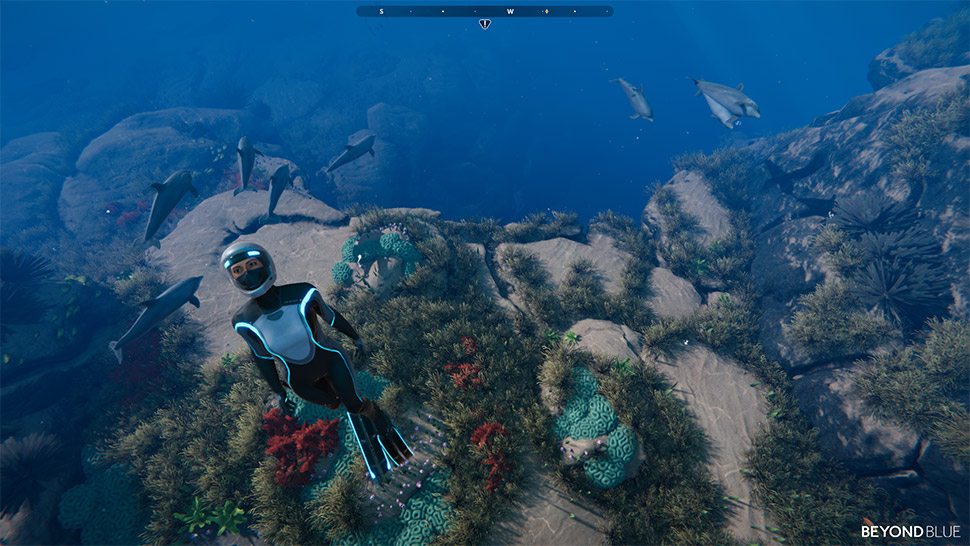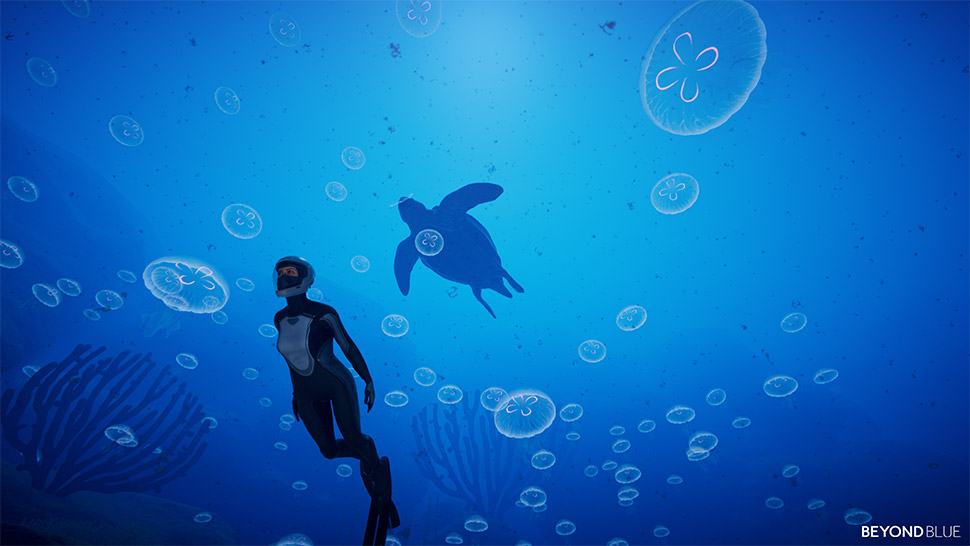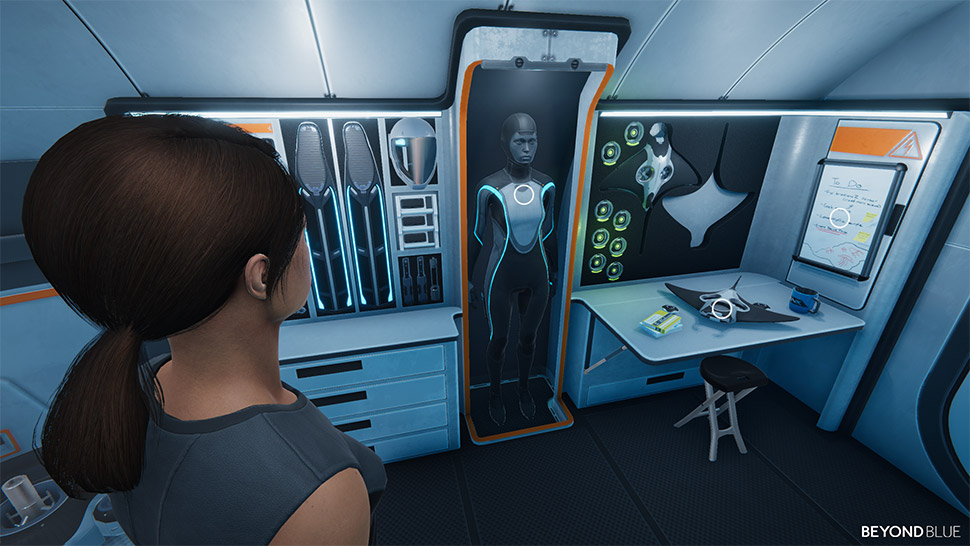Beyond Blue Review

 By Kevin Mitchell | Jun 22, 2020
By Kevin Mitchell | Jun 22, 2020
E-Line Media, known for their inclusive approach to game development and publishing, aims to provide meaningful engagement in their projects. One of my favorite games this generation, Never Alone, an atmospheric puzzle platformer, was developed in direct collaboration with the Iñupiat, an Alaska Native people. It drew from a traditional story, shared across generations, celebrating their culture through a video game. Now, E-Line Media has partnered with BBC Studios, producers of the eye-opening documentary series Blue Planet II, and OceanX to create Beyond Blue, a narrative-driven experience following a group of scientists testing new underwater technology.

Set in the near future, you take on the role of a marine biologist whose love for the ocean and all of its inhabitants flows through their veins. You begin in the calming light blue waters surrounding an atoll (a ring-shaped coral reef). Within each of the eight dives, you progress at your own pace. Want to freely swim around scanning every fish, whale, shark, or dolphin you come across? Go right ahead. When you've had enough and want to advance, narrative waypoints are clearly marked, progressing the story when reached. You can return to each location to scan anything you missed the first time around.
Within each dive, you'll start by searching for an electronic buoy. These buoys can hone in on transponders attached to distinct creatures. Using your futuristic wetsuit, you glide effortlessly through the water to each location. When close enough, you can scan the wildlife to enter them into your scientific log, which tracks the 45 different species you'll encounter. Accessible at any point, this catalog teaches you the entire scientific classification for each species. For example, the giant clam's scientific name is Tridacna gigas; it belongs to the Animalia kingdom, Mollusca phylum, Bivalvia class, Cardiida order, and Cardiidae family. I may not remember any of that once I stop playing, but I'll never object to including these types of details. A simplified regional map highlights where specimens are located in the three main ocean zones: sunlight, twilight, or midnight. There are 3D models and additional research information that can be read during your downtime between dives when you return to the sub. As you continue to scan multiple individuals of the same species, you'll unlock new behaviors to view, such as seeing an octopus quickly turn to avoid a predator, or watching an orca tail slap its prey. While the game follows a fictional story, it relies heavily on its educational goals and is steeped in real-life dangers of underwater exploration and the harm humanity poses to delicate ecosystems.

Mirai's true love is whales; in particular, she is studying a pod of sperm whales, following the journey of a mother and her calf. Wanting to help spread her passion, Mirai and her colleagues live stream her mission to raise awareness and support. Once you get close to one of these massive mammals, you can deploy a small drone that revolves around targets with ease. This gives you plenty of opportunities to study unique markings called flukes (the underside of the whale's tail). You can think of them as fingerprints, as every individual whale has unique tail flukes. Even though you'll get within touching distance of the ocean's largest species and those with plenty of sharp teeth, there are no looming threats. Beyond Blue is an atmospheric, relaxing experience, even when facing massive sperm whales, whitetip reef sharks, or seven-arm octopuses. Schools of smaller fish may scatter as you approach, mistaking you for a predator, but there isn't much in terms of interactions. While there are a few lighthearted scripted moments involving an octopus, they're rare.
Returning to the sub gives you time to reflect on everything that transpired and chat about the findings with your crew. You investigate the cause of an unknown signal heard in the ocean depths, disturbing the pods of whales and other wildlife. I won't go into much else involving the plot, but you'll explore deep within the midnight zone, where sunlight no longer penetrates the water. It was awe-inspiring to swim near active thermal vents on the ocean floor and observe the poor visibility of deep-sea brine pools. There's a side plot involving Mirai's younger sister Ren and her grandmother's struggle with dementia. You'll interact with Ren directly through phone calls and voicemails, but honestly, neither plot thread goes anywhere meaningful. Sixteen real-life mini-documentaries featuring original footage can be viewed from the tablet located on the submarine. They unlock as you progress, and while only a few minutes each, they are remarkably produced and follow the various locales you'll explore.

Simply Put
Beyond Blue's educational approach to studying sea life and learning about humanity's various effects on marine life is outstanding. While marine biologists work to tag and study these precious creatures' habits, learning about their behavior, family development, health, and diseases, some human activities continue to disrupt and cause harm. Though the experience is relatively short, I genuinely enjoyed learning about and scanning all of the ocean's inhabitants.
Note: Beyond Blue was reviewed on Xbox One. A digital copy of the game was provided by the publisher/developer.




